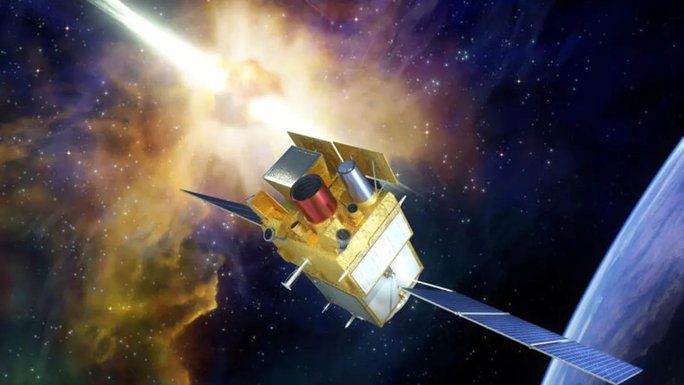A space observatory born from the collaboration of two nations will be tasked with capturing gamma-ray bursts, one of the universe’s most mysterious and powerful events.
According to Space, the French National Center for Space Studies (CNES) and the China National Space Administration (CNSA) will collaborate to launch a new space observatory named SVOM (Multi-band Astronomical Transient Observatory).

Graphic depiction of the new China-France space observatory warrior – (Photo: CAS).
SVOM will extend its gaze into the vast expanse of space around us to detect short-lived and extremely intense cosmic explosions, with gamma and X-ray radiation emitted throughout space.
Gamma-ray bursts remain shrouded in mystery, but the most plausible hypothesis put forth by scientists is that they mark the birth of a stellar black hole.
Stars like our Sun, upon exhausting their energy, undergo a temporary phase as red supergiants before collapsing into white dwarfs. However, much larger stars, sometimes tens of times bigger, can turn into black holes during their final collapse, releasing an immense amount of energy.
To investigate these events, SVOM comes equipped with a variety of advanced instruments. China will provide it with the Gamma-Ray Monitor (GRM) and the VT telescope, responsible for searching for visible light from the bursts. Meanwhile, France will equip this observatory with two telescopes, ECLAIRs and MXT, with MXT specifically designed to capture signals in the form of X-rays.
This observatory weighs a total of 1 ton and will operate as a satellite in Earth’s orbit after being launched by China’s Long March 2C rocket, expected in December of this year.


















































